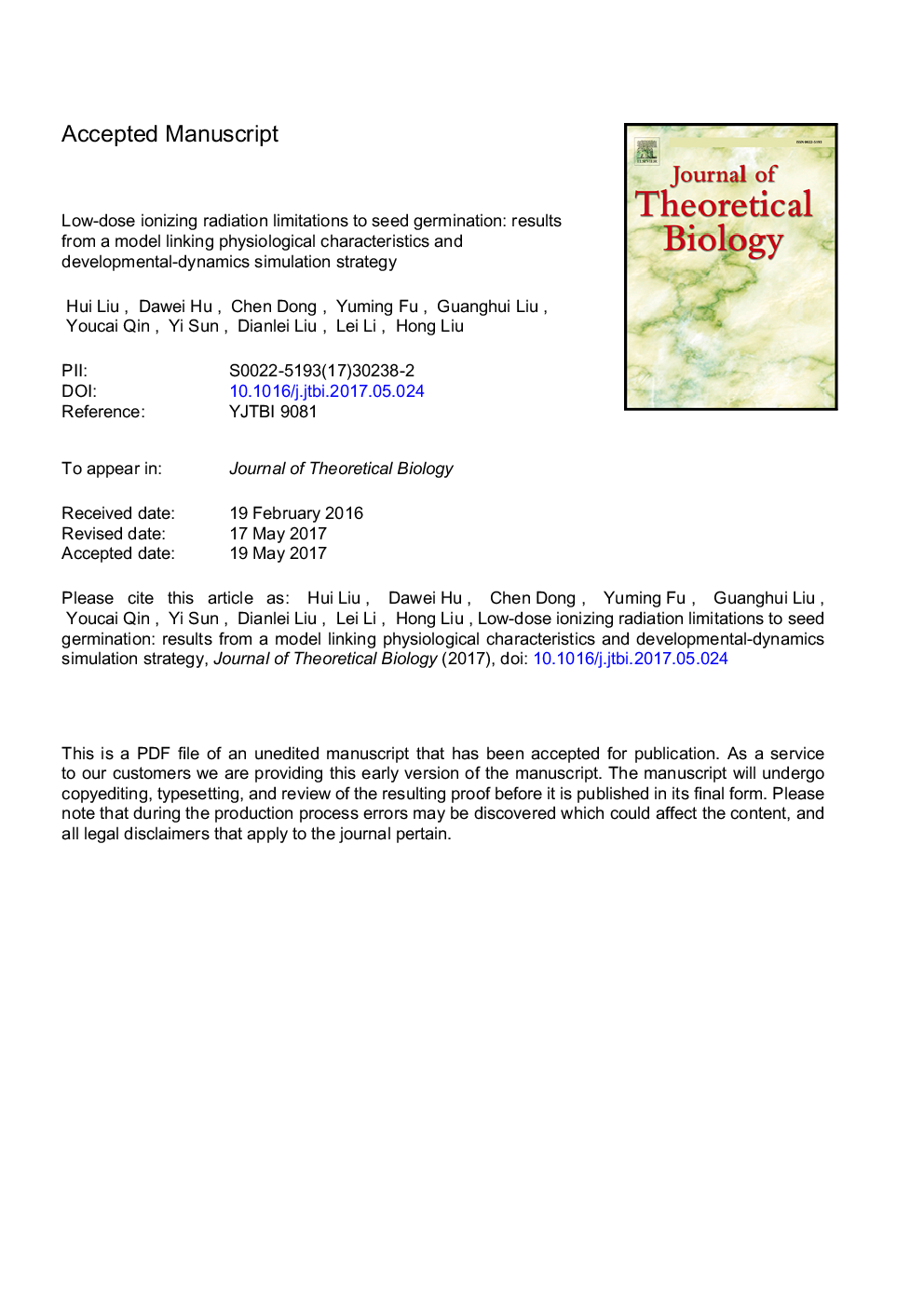| Article ID | Journal | Published Year | Pages | File Type |
|---|---|---|---|---|
| 5760074 | Journal of Theoretical Biology | 2017 | 26 Pages |
Abstract
There is much uncertainty about the risks of seed germination after repeated or protracted environmental low-dose ionizing radiation exposure. The purpose of this study is to explore the influence mechanism of low-dose ionizing radiation on wheat seed germination using a model linking physiological characteristics and developmental-dynamics simulation. A low-dose ionizing radiation environment simulator was built to investigate wheat (Triticum aestivum L.) seeds germination process and then a kinetic model expressing the relationship between wheat seed germination dynamics and low-dose ionizing radiation intensity variations was developed by experimental data, plant physiology, relevant hypotheses and system dynamics, and sufficiently validated and accredited by computer simulation. Germination percentages were showing no differences in response to different dose rates. However, root and shoot lengths were reduced significantly. Plasma governing equations were set up and the finite element analysis demonstrated H2O, CO2, O2 as well as the seed physiological responses to the low-dose ionizing radiation. The kinetic model was highly valid, and simultaneously the related influence mechanism of low-dose ionizing radiation on wheat seed germination proposed in the modeling process was also adequately verified. Collectively these data demonstrate that low-dose ionizing radiation has an important effect on absorbing water, consuming O2 and releasing CO2, which means the risk for embryo and endosperm development was higher.
Keywords
Related Topics
Life Sciences
Agricultural and Biological Sciences
Agricultural and Biological Sciences (General)
Authors
Liu Hui, Hu Dawei, Dong Chen, Fu Yuming, Liu Guanghui, Qin Youcai, Sun Yi, Liu Dianlei, Li Lei, Liu Hong,
